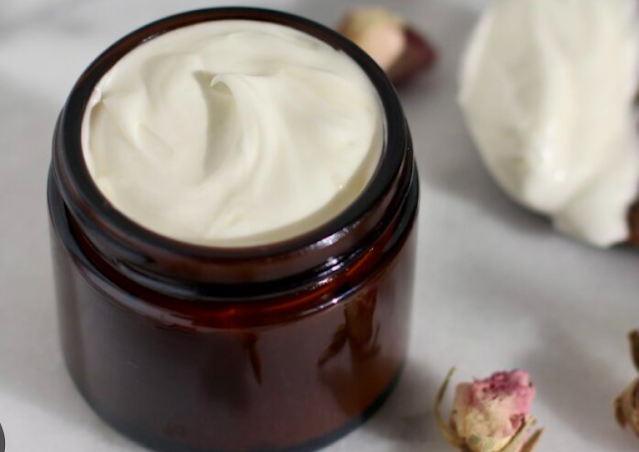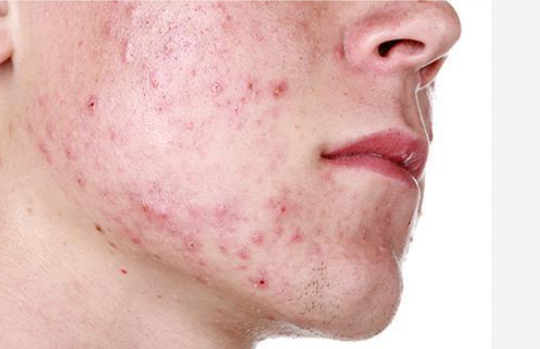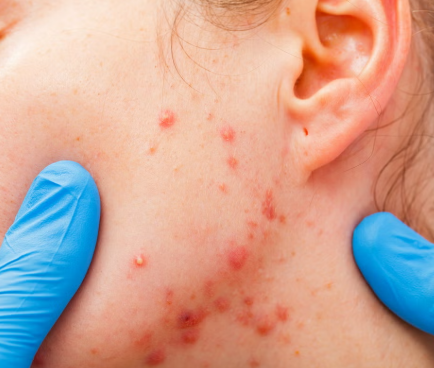beef tallow has historical roots as a skincare ingredient, using it for acne treatment can be dangerous and ineffective.
When it comes to skincare, many of us are constantly seeking natural remedies to tackle common skin issues like acne. Amid this search for all-natural solutions, one ingredient that has recently made a comeback in the skincare world is beef tallow. This animal fat, which was once used in soaps and moisturizers, is now being marketed as a potential solution for acne. But is beef tallow a safe and effective remedy for acne, or does it pose significant risks to the skin and health?
In this blog, we will delve deep into the potential dangers of using beef tallow for acne, why it may not be the miracle solution it’s often claimed to be, and why the FDA has not approved its use in acne treatments. We’ll examine the science behind beef tallow’s potential impact on acne, its possible side effects, and the regulatory concerns that prevent the FDA from giving it the green light.
What Is Beef Tallow?
Before diving into the risks and concerns, let’s first define what beef tallow actually is. Beef tallow is rendered fat from cows, typically obtained from the fatty tissues surrounding the organs such as the kidneys, heart, and liver. In the past, tallow was commonly used in the production of soaps, candles, and skincare products because of its moisturizing properties. It is high in saturated fats, including stearic acid, oleic acid, and palmitic acid, which have skin-nourishing properties.
In recent years, beef tallow has been making a resurgence in the beauty and skincare industry, especially in products marketed as "all-natural." Some proponents claim that beef tallow can help balance oil production and soothe irritated skin, making it an appealing ingredient for people suffering from acne.
But before jumping on the bandwagon, let’s critically assess whether beef tallow can genuinely benefit acne-prone skin, or if its use could have dangerous consequences.
How Acne Develops and the Role of Skin Oils
Acne is a skin condition that occurs when hair follicles become clogged with dead skin cells, excess oil (sebum), and bacteria. The most common areas affected are the face, chest, shoulders, and back. Acne can range from mild, with just a few pimples, to severe, with painful cysts and scarring.
The overproduction of sebum is a major factor in acne development. While sebum is essential for keeping the skin moisturized and protected, too much sebum can clog pores and provide an ideal environment for acne-causing bacteria. The clogged pores then become inflamed, leading to the characteristic pimples, blackheads, and cysts associated with acne.
This is where beef tallow enters the equation. Tallow, being high in fatty acids, may seem like a natural way to hydrate the skin and balance oil production. However, when using beef tallow on acne-prone skin, it’s important to understand how additional oil can contribute to further clogged pores and exacerbate acne.
The Dangers of Using Beef Tallow for Acne-Prone Skin
While some might advocate for beef tallow as a miracle remedy for acne, it’s important to weigh the potential risks. Let’s examine why this ingredient could be dangerous for those dealing with acne.
1. High in Saturated Fats
Beef tallow is predominantly made up of saturated fats, which are known to be heavy and can clog pores. Pore-clogging, or comedogenic, substances are the primary cause of acne, as they trap oils, dead skin cells, and bacteria inside the pores. This promotes inflammation and creates an environment where acne thrives.
Since beef tallow is composed mainly of fats, applying it to the skin can potentially add extra oils that clog already compromised pores, leading to more frequent breakouts. While some argue that the fatty acids in tallow can mimic the natural oils found in the skin, the truth is that tallow’s composition may not be suitable for every skin type, particularly oily and acne-prone skin.
2. Promotes the Growth of Acne-Causing Bacteria
The excess oils and fats from beef tallow can contribute to the proliferation of acne-causing bacteria, such as Propionibacterium acnes. These bacteria thrive in clogged pores, leading to infections and inflammation that worsen acne. Beef tallow, with its dense oil content, can encourage a breeding ground for these bacteria, making it difficult for acne sufferers to see improvement in their skin.
3. Potential for Skin Sensitivity and Irritation
Another concern with beef tallow is that it may irritate sensitive skin. Acne-prone skin is already compromised, and applying a heavy, greasy substance like tallow can exacerbate skin irritation and trigger allergic reactions. For individuals with rosacea, eczema, or other inflammatory skin conditions, the use of beef tallow may worsen redness, puffiness, or irritation.
Since tallow is derived from animal fat, it may also contain other ingredients such as hormones or traces of antibiotics, depending on how the beef was raised. This could further irritate sensitive skin, especially when dealing with conditions like acne.
4. Unregulated and Unapproved by the FDA
One of the most significant concerns with using beef tallow for acne is that it is unapproved by the FDA for use in skincare products, particularly those aimed at treating acne. The FDA has strict regulations for skincare ingredients and products, and any substance used to treat or cure skin conditions like acne must undergo rigorous testing to ensure it is both safe and effective. Beef tallow has not undergone these tests, which means it is not backed by the scientific evidence necessary to validate its claims.
Furthermore, the FDA has not classified beef tallow as a safe and approved ingredient for acne treatment, meaning there is no regulatory oversight ensuring its safety for long-term use. Using unregulated products on acne-prone skin may expose individuals to unforeseen side effects, including worsening of acne or allergic reactions.
The FDA’s Stance on Beef Tallow and Skincare
While beef tallow is used in some cosmetics and personal care products, the FDA has not specifically approved it for use in treating acne. The lack of regulation means that there is little scientific data available on the safety and efficacy of beef tallow for acne.
The FDA requires that all acne treatments undergo clinical trials and meet specific standards for safety and effectiveness before being marketed as acne treatments. Because beef tallow has not undergone these trials, it is not considered a scientifically validated treatment for acne.
For individuals seeking safe and effective acne treatments, it is essential to rely on products that have been FDA-approved or are backed by scientific research. Over-the-counter treatments containing benzoyl peroxide, salicylic acid, and retinoids are all FDA-approved and have been shown to effectively treat acne.
The Risk of Using Unregulated Ingredients
When using unregulated ingredients like beef tallow for acne, there is a significant risk of exacerbating the condition. Many individuals who try natural or DIY acne treatments, such as tallow, may find that their acne worsens due to the ingredient’s comedogenic properties or the lack of regulation around its use.
Moreover, acne treatments often require consistent, targeted, and evidence-backed ingredients to effectively manage the condition. Without the proper clinical testing, there is no guarantee that beef tallow will provide the desired results—and it could even cause additional harm.
Safer Alternatives to Beef Tallow for Acne
While beef tallow may not be the right choice for acne treatment, there are many safer, FDA-approved options available. Here are some alternatives that are widely recognized for their effectiveness in treating acne:
1. Benzoyl Peroxide
Benzoyl peroxide is one of the most commonly recommended treatments for acne. It works by killing acne-causing bacteria, reducing oil production, and unclogging pores. Available in many over-the-counter products, benzoyl peroxide is proven to be effective for mild to moderate acne.
2. Salicylic Acid
Salicylic acid is a beta hydroxy acid (BHA) that exfoliates the skin, helping to clear pores and reduce inflammation. It is especially effective for blackheads and whiteheads and can be found in many acne treatments and cleansers.
3. Retinoids
Retinoids, such as tretinoin, are vitamin A derivatives that promote skin cell turnover, helping to prevent clogged pores and reduce the appearance of acne. Retinoids are often recommended for people with persistent acne and acne scars.
4. Tea Tree Oil
Tea tree oil is a natural anti-inflammatory and antimicrobial ingredient that can help reduce acne-causing bacteria. It’s a gentler, natural option for those with mild acne or sensitive skin.
5. Zinc Supplements
Zinc is an essential mineral that has been shown to reduce inflammation and control oil production in the skin. Topical zinc formulations and zinc supplements may help with acne, especially for those with more severe cases.
Final Thoughts: Is Beef Tallow Safe for Acne Treatment?
While beef tallow has historical roots as a skincare ingredient, using it for acne treatment can be dangerous and ineffective. The high saturated fat content and comedogenic nature of beef tallow may worsen acne rather than improve it. Additionally, the lack of FDA approval for its use in acne treatment raises serious concerns about its safety and efficacy.
If you are struggling with acne, it’s best to rely on scientifically-backed, FDA-approved treatments that have been shown to work safely and effectively. Natural alternatives like tea tree oil or zinc, along with proven ingredients such as benzoyl peroxide and salicylic acid, are far safer and more effective options for managing acne.
So, while beef tallow may have its place in certain skincare routines, it is not the miracle acne treatment some might claim it to be. Always choose products that are regulated and supported by clinical evidence to ensure your skin remains healthy, safe, and clear.














